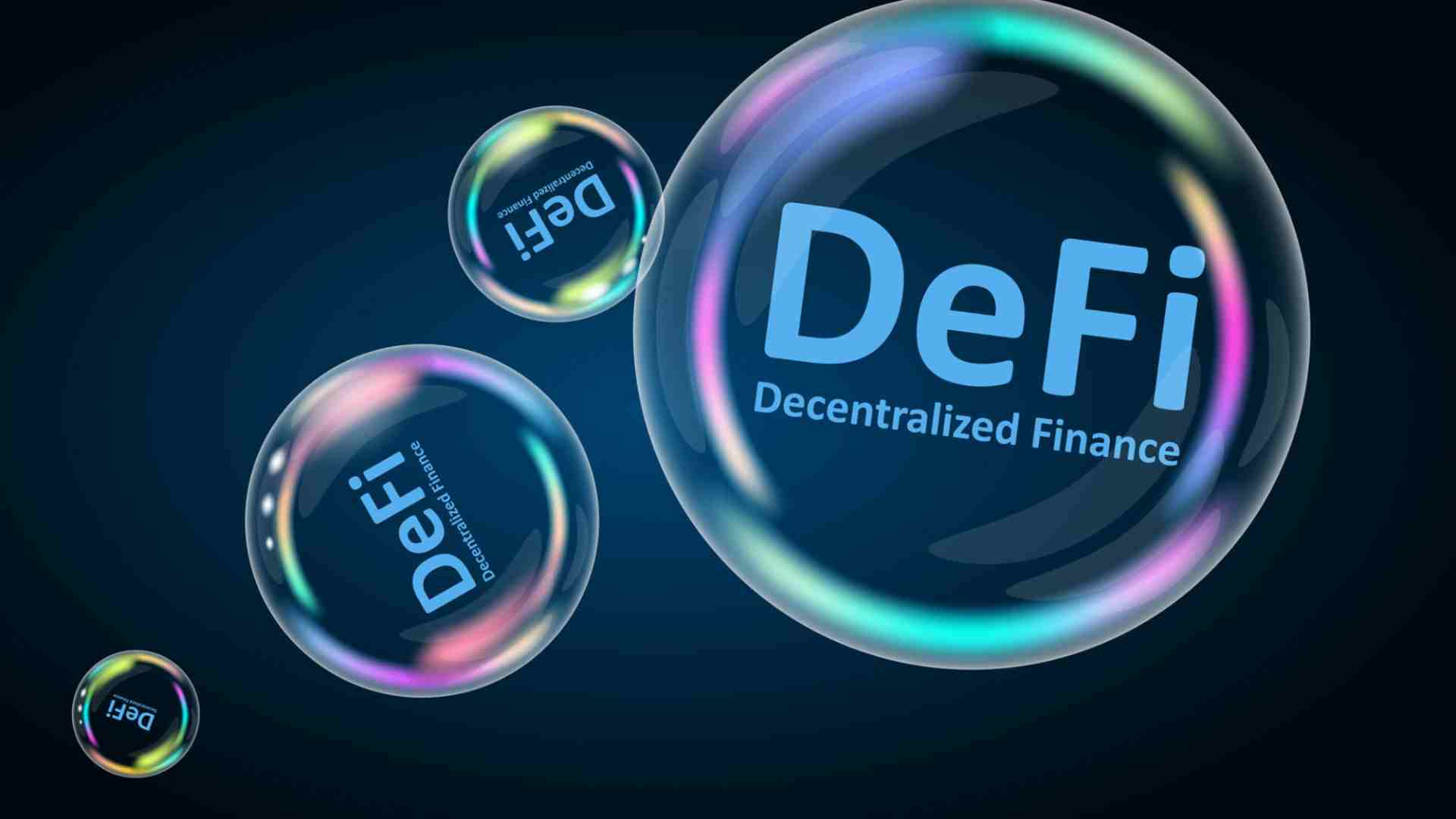Earning Passive Income with Defi
Consider yield farming and liquidity mining as prime strategies to generate returns on your assets in the crypto ecosystem. By providing liquidity to decentralized exchanges (DEXs) or lending platforms, you can earn rewards often surpassing traditional financial instruments.
For instance, platforms like Aave and Compound allow users to lend their cryptocurrencies, earning interest alongside governance tokens. Specifically, Aave’s flash loans offer rapid borrowing without collateral, generating income through smart contract capabilities. Engaging with these platforms not only enhances your asset appreciation but also diversifies your portfolio.
Staking is another pivotal approach. Many blockchain protocols incentivize token holders to lock their assets, contributing to network security while reaping rewards. By staking assets in protocols like Cardano or Solana, investors can earn competitive returns with minimal engagement.
Stay vigilant regarding the Associated Risks. Market volatility and impermanent loss in liquidity pools necessitate thorough research before committing funds. Diversifying across different platforms and strategies can mitigate losses and stabilize your earnings.
Exploring Yield Farming Opportunities in DeFi
For those seeking high returns, yield farming presents intriguing prospects. Utilize platforms like Aave and Compound, where users can lend their assets to earn interest. Rates fluctuate based on supply and demand; keeping a close eye on these metrics ensures timely investment moves.
Identifying High-Yield Pools
Research liquidity pools on Uniswap and SushiSwap. Focus on pairs with high trading volume, as this indicates robust activity, leading to enhanced rewards. Evaluate the annual percentage yields (APY) offered and consider impermanent loss risks when providing liquidity. Use analytics tools such as DeFi Pulse to track and compare different pools efficiently.
Leveraging Governance Tokens
Participate in governance models by acquiring tokens from platforms like Yearn Finance. Holding these tokens often unlocks additional bonuses or fee-sharing mechanisms. Staying updated on upcoming governance proposals can also provide opportunities to vote on changes that may impact yield rates positively.
Track the market sentiment using social media and forums to identify trending assets and upcoming projects. Engaging with community discussions can uncover hidden gems and valuable insights into potential yield farming scenarios.
Comparison of Staking vs. Liquidity Provisioning
Staking typically offers higher annual percentage yields (APY) compared to liquidity provisioning. When choosing between the two, consider the following aspects:
- Risk Levels:
- Staking involves locking tokens in a protocol, which can lead to penalties if you withdraw before a specified period.
- Liquidity provision, while also risky, exposes you to impermanent loss due to price fluctuations of the tokens in the pair.
- Returns:
- Stakers earn rewards based on the network’s transaction fees and block rewards, offering potentially stable returns.
- Liquidity providers receive fees for trades executed in their pool, which can be lucrative during high trading volumes but volatile otherwise.
- Complexity:
- Staking processes are generally simpler; users need to delegate their tokens to a validator.
- Liquidity provisioning requires understanding the mechanics of market making and token pairs.
- Token Utility:
- Staked tokens may participate in governance and contribute to network security.
- Liquidity tokens may also provide governance but can be less impactful compared to staked assets.
For individuals prioritizing stability and lower risk, staking is often preferable. Those willing to accommodate higher risks for potential greater returns may find liquidity provision attractive. Evaluate market conditions, personal risk tolerance, and token utility before making a decision.
Risk Analysis: What to Consider Before Investing
Conduct thorough research on each platform before allocating funds. Investigate their reputation, user feedback, and security measures implemented. Prioritize platforms with a transparent governance structure and known track records.
Key Risks to Assess
| Risk Type | Description | Mitigation Strategy |
|---|---|---|
| Smart Contract Vulnerabilities | Exploits can occur if code is poorly written. | Review audits conducted by reputable firms. |
| Market Volatility | Asset values can fluctuate dramatically. | Diversify investments to spread risk. |
| Regulatory Changes | New laws can impact operations abruptly. | Stay updated on legal developments in the sector. |
| Liquidity Risk | Difficulty in selling assets at expected prices. | Ensure sufficient market depth for assets held. |
| Operator Risk | Failure of the platform may lead to losses. | Analyze the team’s experience and background. |
Conducting Due Diligence
Use tools such as on-chain analysis to monitor transactions and activity. Examine liquidity pools for historical performance and changes. Regularly assess project developments and community engagement to gauge potential for growth.
Tax Implications of Earning Passive Income in DeFi
Consult a tax professional to understand specific requirements based on your jurisdiction. Generally, earnings from platforms offering returns on cryptocurrency holdings may be subject to taxation.
- Income generated through staking, lending, or yield farming is often classified as taxable. The rate may depend on whether it’s treated as ordinary income or capital gains.
- Document all transactions meticulously. Keep track of dates, amounts, cryptocurrency types, and the purpose of each transaction.
- Evaluate the differences in tax treatment between short-term and long-term asset holding. Assets held for over a year may qualify for reduced capital gains rates.
- Consider the impact of tokens received from liquidity pools, as they may be recognized as taxable events when you receive them.
- Check for any additional reporting requirements specific to your country, such as completed forms or disclosures about foreign accounts or digital assets.
Pay attention to the possibility of self-assessment within your tax return. In many jurisdictions, it is the responsibility of the individual to ensure accurate reporting of earnings from these platforms.
- Always report any gains, even if the earnings are in the form of new tokens.
- Track transaction costs; they may be used to offset gains, affecting overall tax liability.
- Be aware of potential tax obligations arising from providing liquidity, as any withdrawals may trigger taxable events.
Evaluate your options, including tax-loss harvesting, which allows you to offset potential taxable gains with losses in your cryptocurrency investments.
Choosing the Right DeFi Platforms for Passive Earnings
Select platforms with strong security audits and transparent protocol mechanisms. Look for projects that have undergone extensive third-party assessments to reduce risks.
Examine the liquidity pools available. Higher liquidity generally translates to more stable returns. Assess the annual percentage yields (APY) offered, comparing similar services across various platforms.
Check the tokenomics of the projects. Favor platforms that utilize deflationary tokens or those with buyback mechanisms, as these often lead to increased value over time.
Evaluate governance structures. Platforms with decentralized governance allow users to influence decision-making, enhancing community engagement and potentially improving returns through collective actions.
Analyze user experience and interface. A seamless user interface enables better transaction management and interaction with smart contracts, which is crucial for optimizing earnings.
Investigate community support and developer activity. Active communities and ongoing development are indicators of a project’s longevity and reliability.
Review fees associated with transactions and withdrawals. Platforms with lower fees provide better net gains over time, so select services that maintain reasonable fee structures.
Consider diversification across multiple platforms. This strategy minimizes risk exposure and can maximize overall earnings by capitalizing on varied opportunities.
Strategies for Diversifying Your DeFi Income Streams
Engage in yield farming across multiple protocols. Use platforms like Curve, Aave, or Yearn, where you can lend assets and earn different tokens as rewards. Each platform has unique risks and returns, so assess them carefully before investing.
Consider liquidity provision in decentralized exchanges (DEXs). By supplying tokens to pools on Uniswap or SushiSwap, you accrue fees from trades. Diversify your pairs to mitigate risks associated with impermanent loss.
Staking is another way to generate earnings. Many blockchain networks offer staking options for holders of their native tokens. Research which projects have solid track records and provide attractive staking rewards.
Explore lending protocols. Platforms like Compound or Maker allow you to lend your crypto and earn interest. Choose assets with stable demand, and leverage tools to track your rates and ensure optimal returns.
Participate in governance tokens for projects that resonate with you. Holding these tokens allows you to vote on protocol changes, often yielding additional benefits and incentives for active participants.
Utilize cross-chain strategies. Platforms such as Binance Smart Chain or Polkadot offer various opportunities. Spreading assets across different blockchains can balance potential volatility, maximizing your returns.
Engage in NFT staking or farming if you hold digital collectibles. Certain projects reward users for holding and staking NFTs, tapping into a rapidly growing sector that often delivers high yields.
Regularly review and rebalance your portfolio. Market conditions fluctuate; ongoing assessment will help you minimize risks and capitalize on emerging opportunities in the crypto space.
Q&A: Earning Passive Income with Defi
How can users generate passive income with crypto by participating in DeFi staking and lending protocols?
Users can generate passive income with crypto by using DeFi staking and lending protocols that reward participants for locking or supplying their assets. Through DeFi staking, users can delegate tokens into a staking pool to earn rewards in the form of additional tokens. DeFi lending platforms also allow users to earn a share of interest by lending crypto assets to borrowers. These passive income strategies are designed to help users start earning without active trading, making them a popular way to earn passive income in crypto.
What are some of the advantages of DeFi for users looking to earn passive income through decentralized finance activities?
DeFi provides transparency, accessibility, and flexibility, allowing users to earn passive income through various DeFi protocols without relying on traditional banks. By participating in lending and borrowing, yield farming, or providing liquidity to DeFi platforms, users can earn returns in the form of interest or tokens. The decentralized nature of DeFi offers users full control over their funds while unlocking opportunities for income generation through smart contracts and blockchain technology.
What role does DeFi yield farming play in the broader DeFi ecosystem for those seeking passive income opportunities?
DeFi yield farming is a key component of the DeFi ecosystem, enabling users to earn rewards by providing liquidity to different DeFi platforms. Users earn a portion of transaction fees or protocol incentives in exchange for contributing to liquidity pools. Yield farming is a powerful way to generate passive income with DeFi, as it offers higher returns compared to traditional finance, though it also involves higher risk. This strategy has become a popular method for income generation in the evolving DeFi landscape.
How do different DeFi projects and platforms enable users to make passive income, and what are some common passive income streams?
Different DeFi projects offer various opportunities for earning passive income through activities like lending or staking, providing liquidity, or investing in DeFi tokens. Users can earn passive income through DeFi by selecting platforms that best match their risk profile and income goals. Common passive income streams include staking rewards, interest from lending, and token incentives from liquidity mining. These opportunities for earning are part of what makes the DeFi space attractive to crypto users seeking additional income.
How can users start earning passive income through DeFi lending and borrowing, and what makes it attractive in the current DeFi world?
Users can start earning passive income by participating in DeFi lending and borrowing platforms, where they supply crypto assets to earn interest from borrowers. DeFi operates without intermediaries, allowing users to earn interest directly through smart contracts. This passive income generation is attractive because it offers higher yields compared to traditional savings accounts, and it’s accessible globally to any user with an internet connection and a crypto wallet.
What are some of the best DeFi strategies for users looking to earn passive income with crypto, and how do different DeFi protocols support this goal?
The best DeFi strategies for earning passive income with crypto include staking, liquidity provision, and algorithmic lending. Different DeFi protocols specialize in these activities, providing diverse earning opportunities across the DeFi ecosystem. These platforms often offer income in the form of governance tokens or interest payouts. By diversifying across multiple DeFi investments, users can increase their earning potential while managing risk in a decentralized financial environment.
How is the potential of DeFi shaping new opportunities for passive income, especially as DeFi is still evolving?
The potential of DeFi continues to expand with ongoing developments in the DeFi space, introducing innovative ways for users to generate income. As DeFi is still evolving, new protocols and earning models are regularly launched, providing more opportunities for passive income generation. This dynamic environment allows DeFi users to explore various strategies and benefit from early adoption in high-growth projects, further enhancing their crypto passive income prospects.
Why do DeFi platforms often provide higher earning opportunities compared to traditional finance, and what risks should users consider?
DeFi platforms often offer higher earning opportunities because they eliminate intermediaries, allowing users to earn interest or rewards directly from other participants. This efficiency boosts returns and makes DeFi investments appealing for passive income seekers. However, users must also consider risks such as smart contract vulnerabilities, token volatility, and platform security. Understanding how DeFi operates and selecting reputable protocols is essential for safe and consistent crypto passive income.



